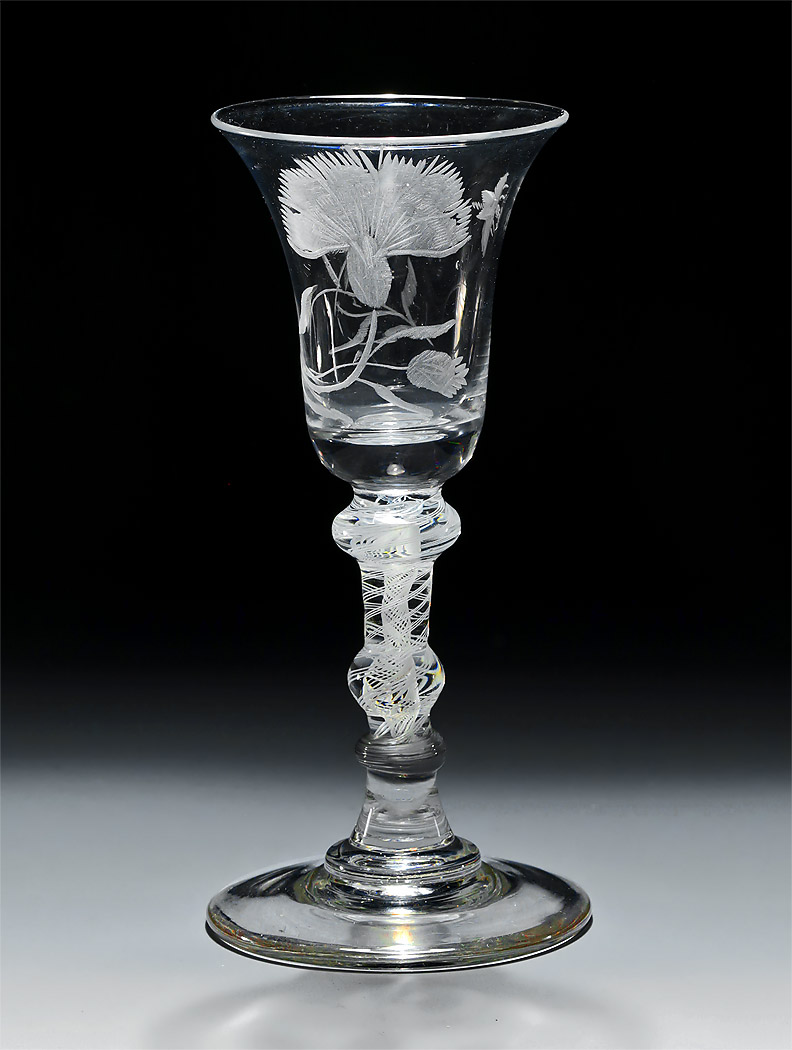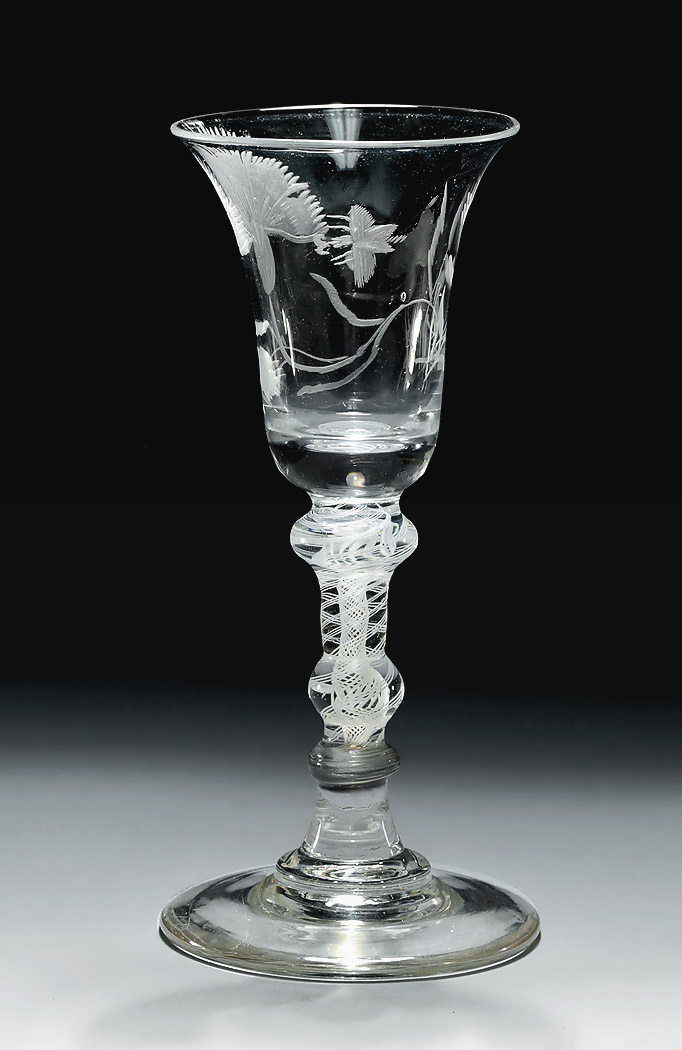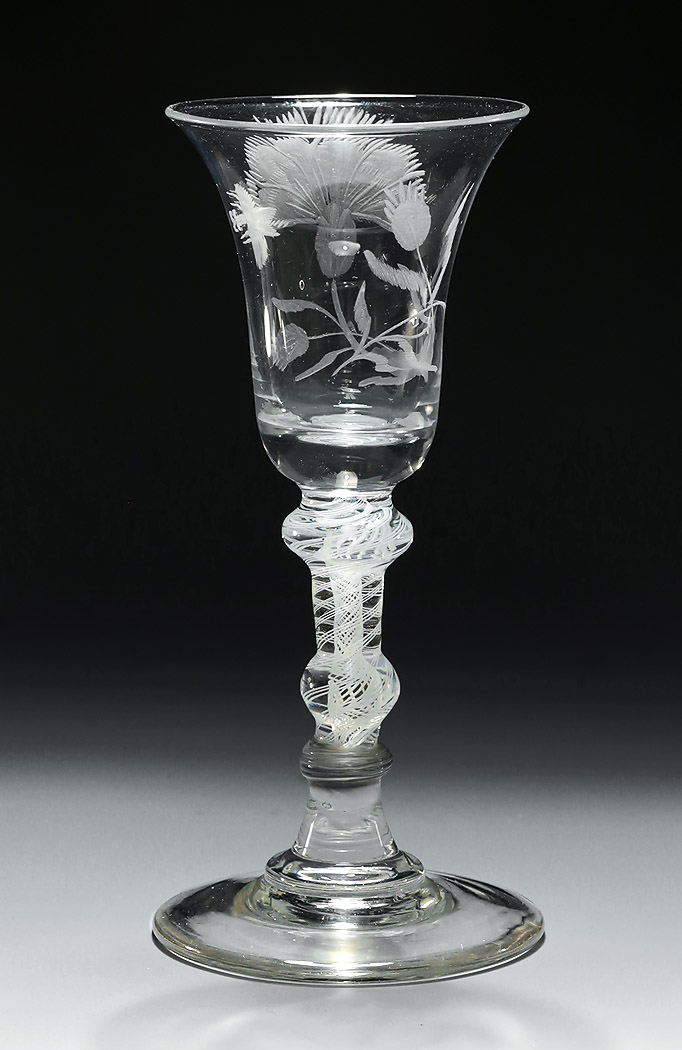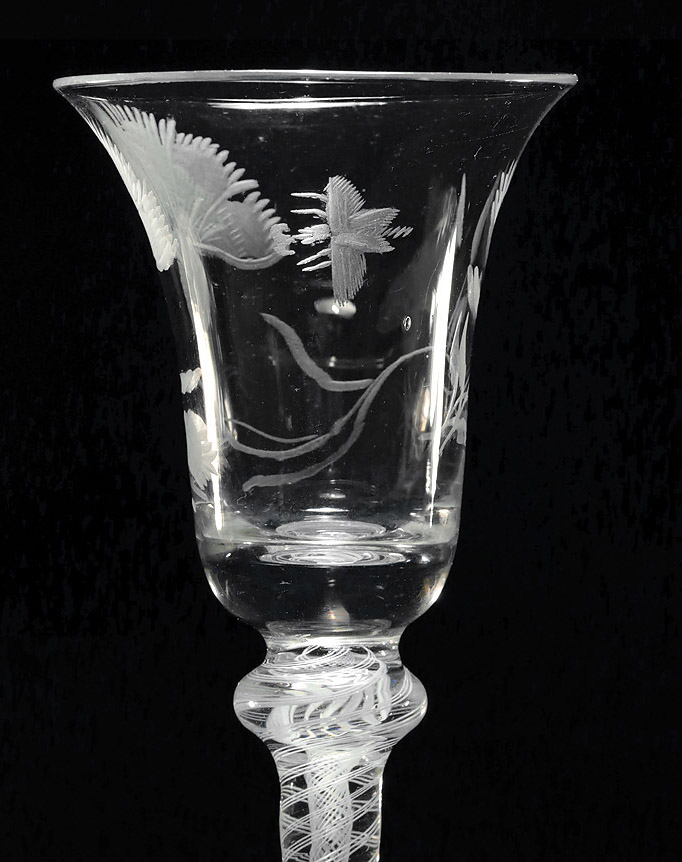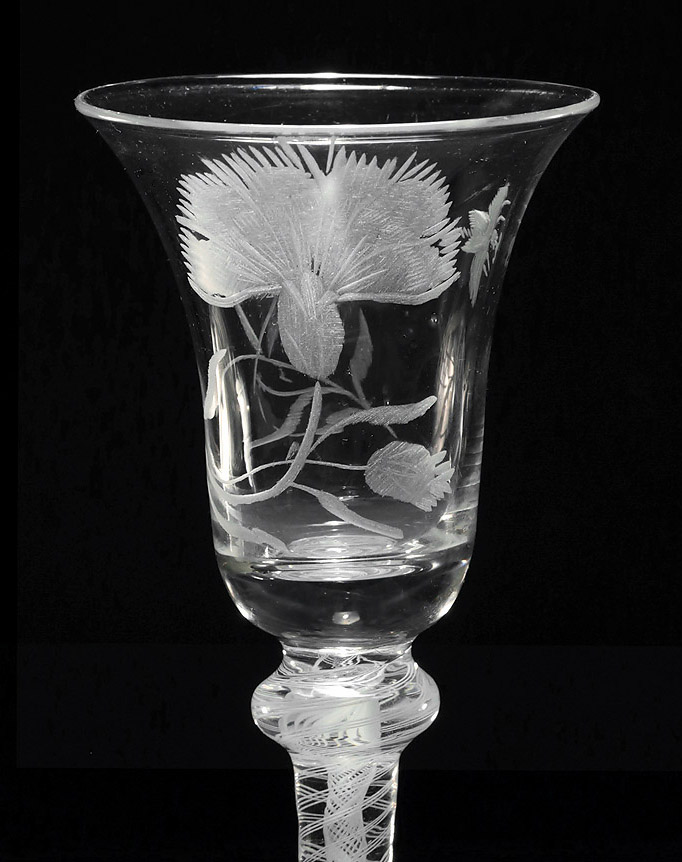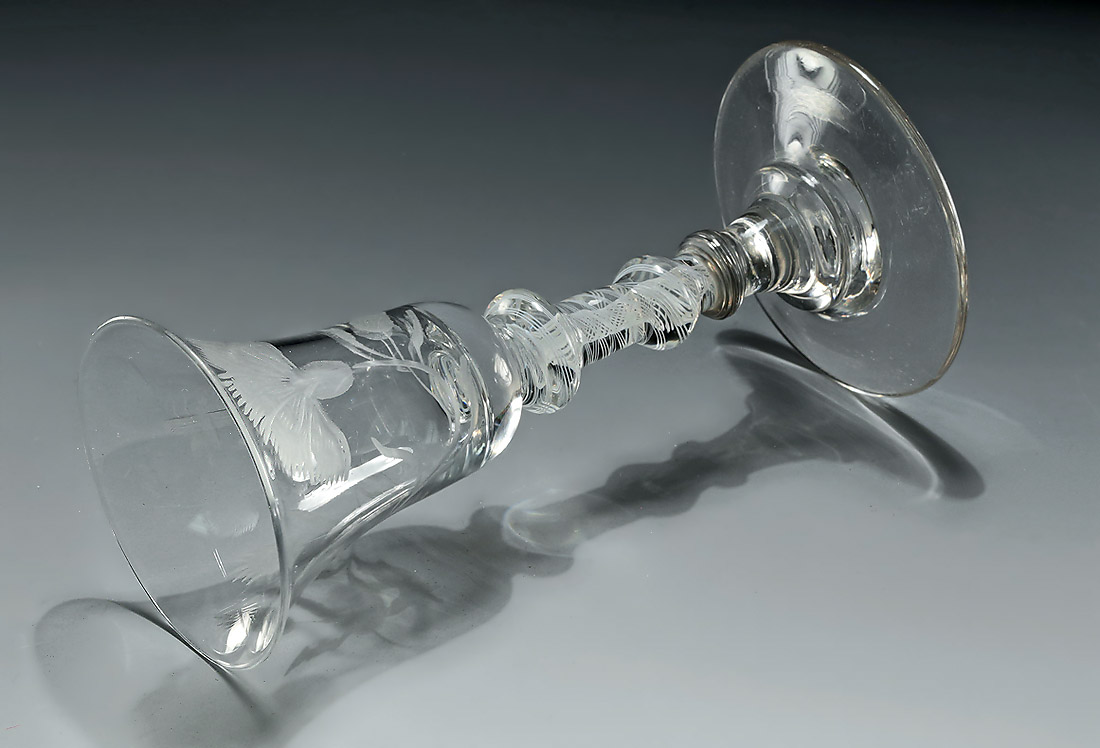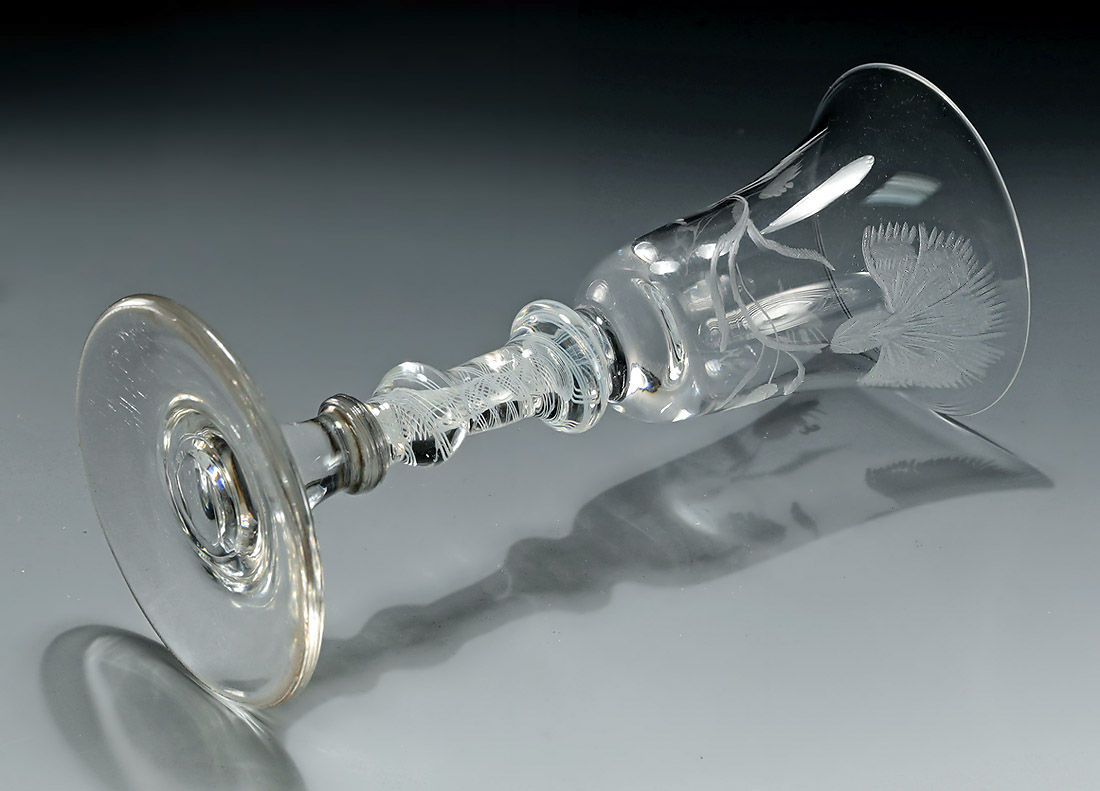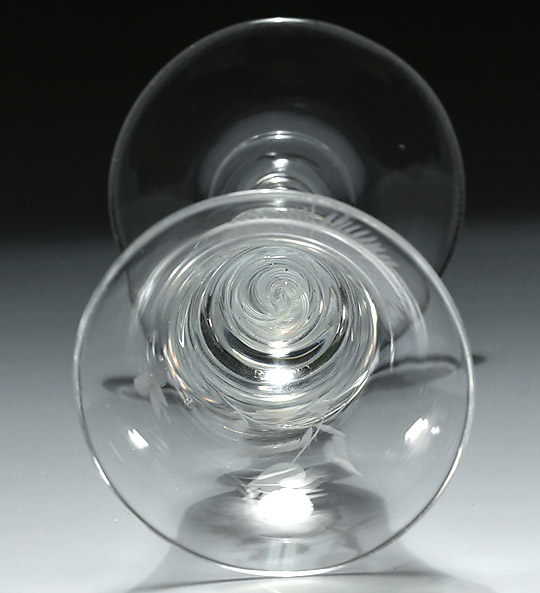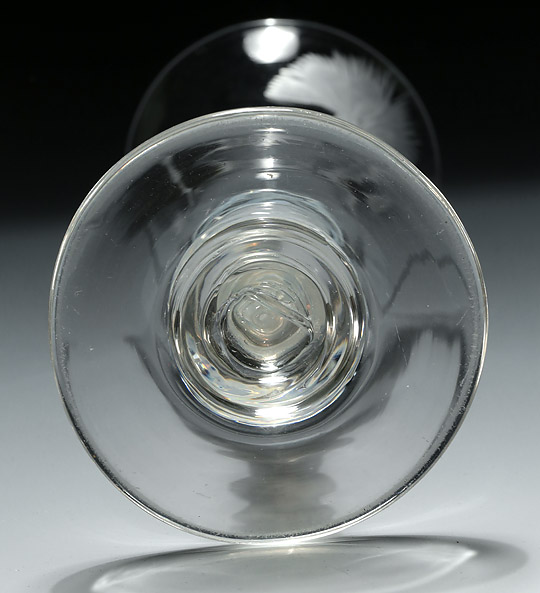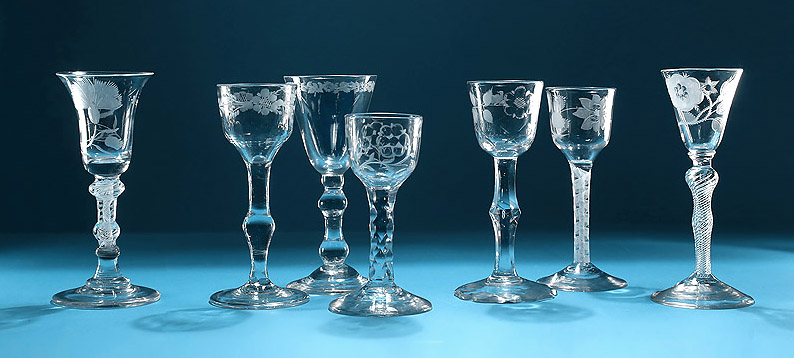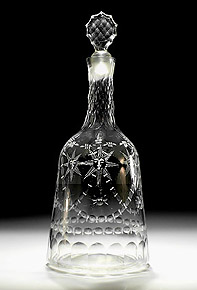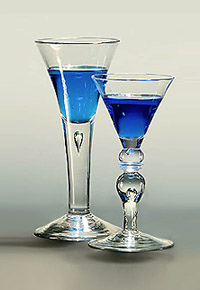Carnations and the Jacobite Cause
Collectors of Jacobite glass are familiar with engraved Tudor or Stuart roses.
Fewer are aware of the significance of Carnations.
Bonnie Prince Charlie was born on 31st December 1720.
The following January was unseasonably warm and the carnations bloomed early – taken as an "omen" :
"The year 1721 began with a burst of spring which terrified nervous people.
' Strange and ominous,' was the comment on the suburban fields full of flowers,
and on the peas and beans in full bloom at Peterborough House, Milbank.
When the carnations budded in January, there was ' general amazement '
even among people who cut coarse jokes on the suicides which attended the
( financial) bursting of the South Sea bubble.
The papers were quite funny, too, at the devastation which an outbreak of smallpo
x was making among the young beauties of aristocratic families.
The disease had silenced the scandal at tea tables, by carrying off the guests,
and poor epigrams were made upon them.
Dying, dead, or ruined, everyone was laughed at."
1720 was the low point for the Jacobite cause.
A small combined Spanish and Highlander force had been defeated at the battle of Glenshiel the previous summer.
It had been four years since Prince James set sail from Montrose after the 1715 uprising.
And James III was in his papal palace at the Piazza dei Santi Apostili,
consuming the funds of supporters.
So the very early budding of Carnations was a "sign".
Carnations had been associated with "the cause" for quite some time.
One of the earliest references is a c1704 portrait of Princess Louise,
the Princess Royal / "Princess over the water" (youngest daughter of King James II and VII).
(Princess Louisa Maria Teresa Stuart, by Alexis Simon Belle, Scottish National Portrait Gallery)
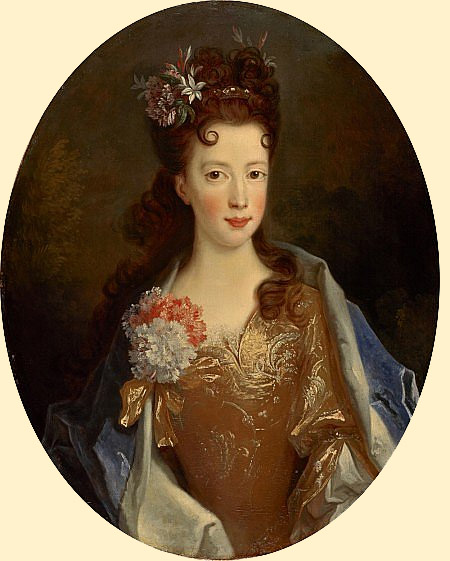
Louise wears a gold brocade dress with a white and a red carnation.
In her hair are diamonds and further prominent red carnations.
And Red and White were the colours of the Stuart battle standard.
White - House of Bourbon and Dukes of York (white rose) and Albany (white land, code for Scotland)
Red - high status, being the first among colours, the first of the spectrum; the colour of the king;
used by supporters of the Crown and the legitimate succession in the Exclusion Crisis.
The rouge and prominently painted lips on white skin was more than just fashion.
This was painted at a time when a message or hidden meaning was denoted just in the way a lady held her fan.
But why carnations instead of the rose?
"Carnation' was used for 'coronation'.
As virtually all risk of prosecution arose from language, references deriving from Latin,
off rhymes, symbols or puns were used extensively to circumvent the law."
There are also numerous references in chronicles and literature to later Jacobite parades
being lead by "crosses of carnations", as the tombs of both Pretenders were
strewn yearly with carnations until 1898. |
